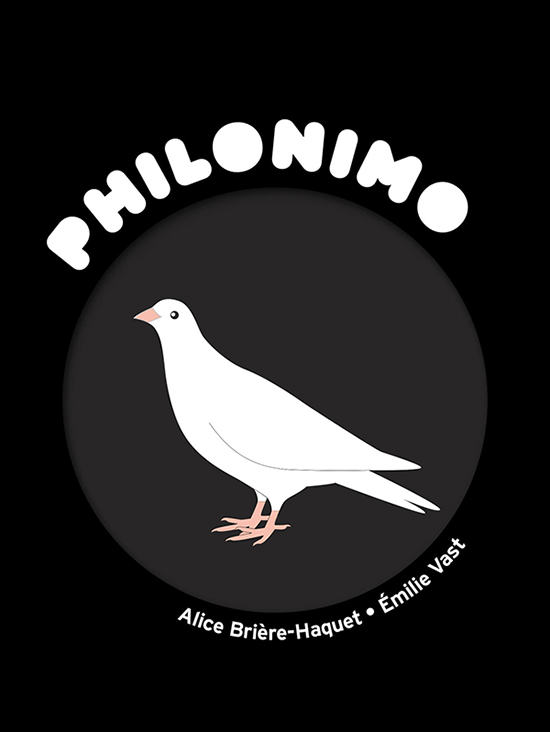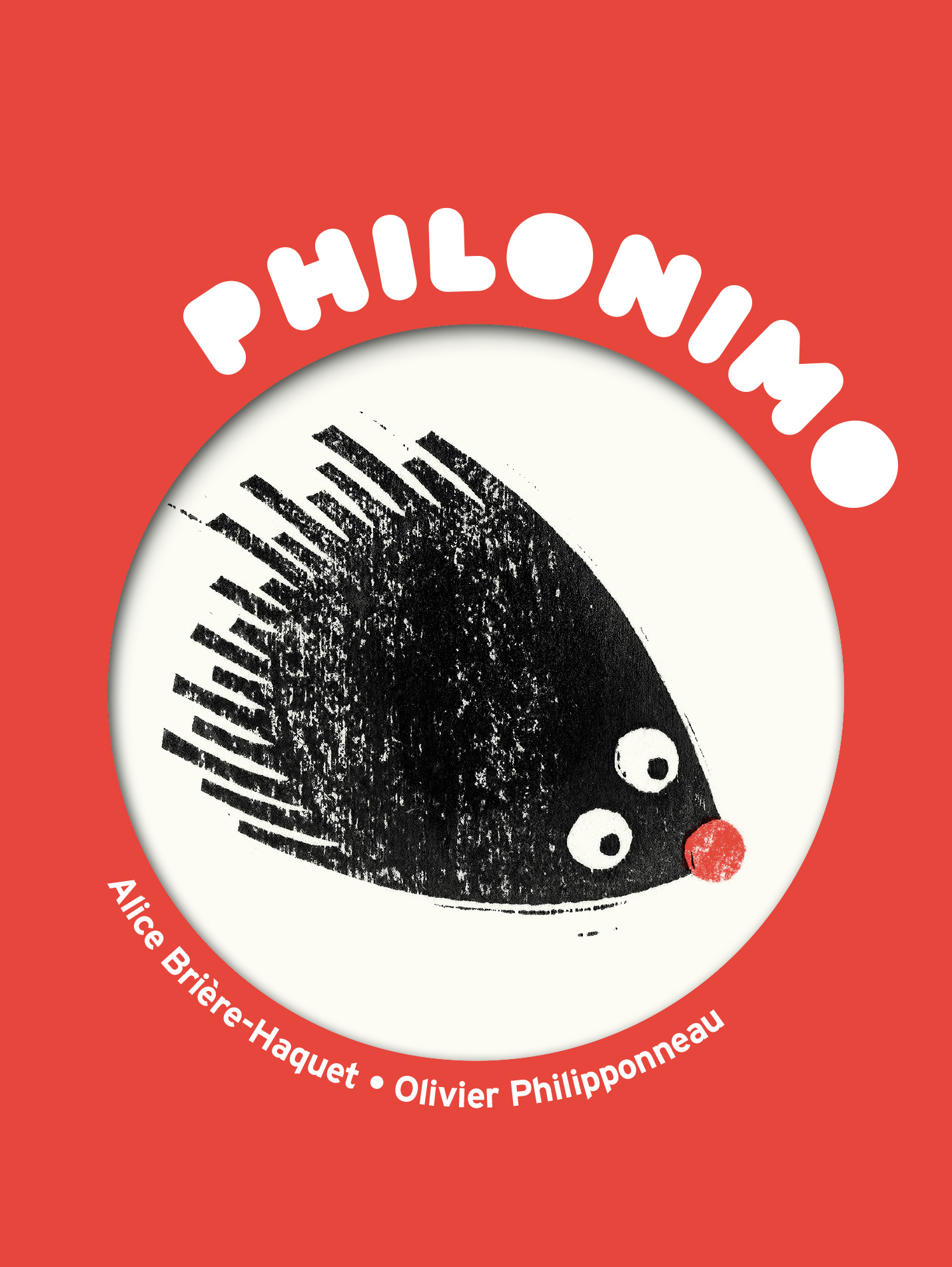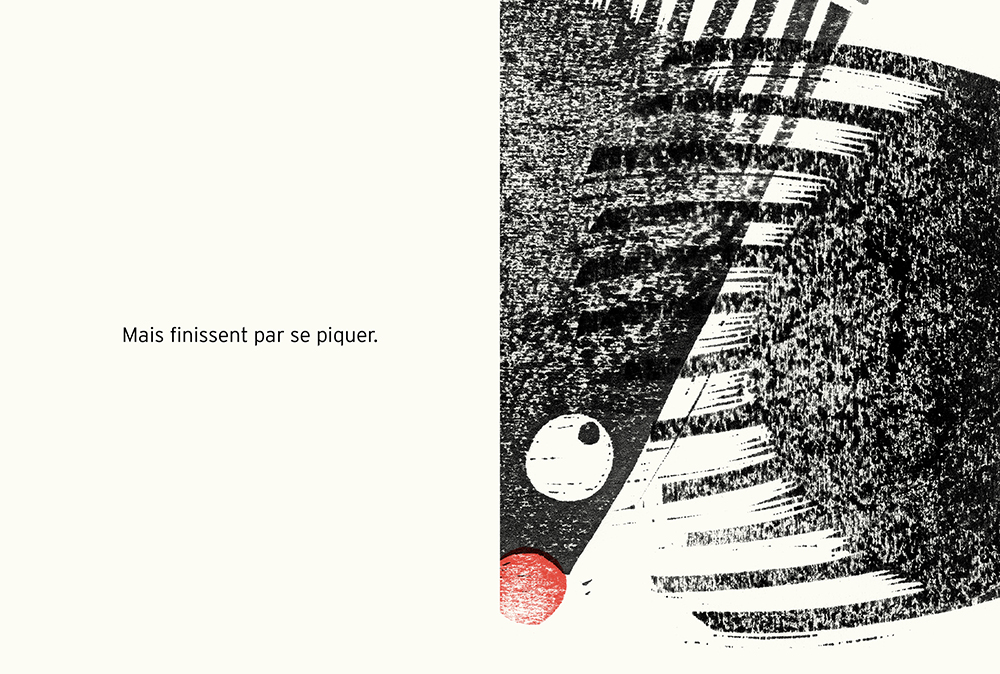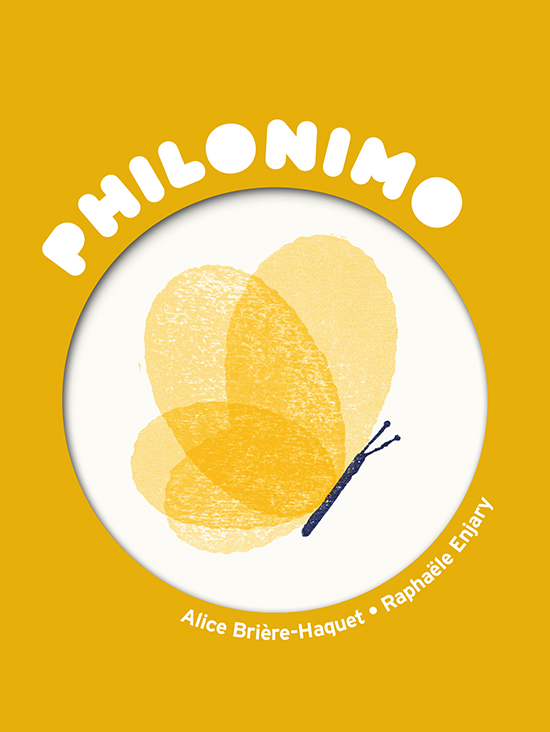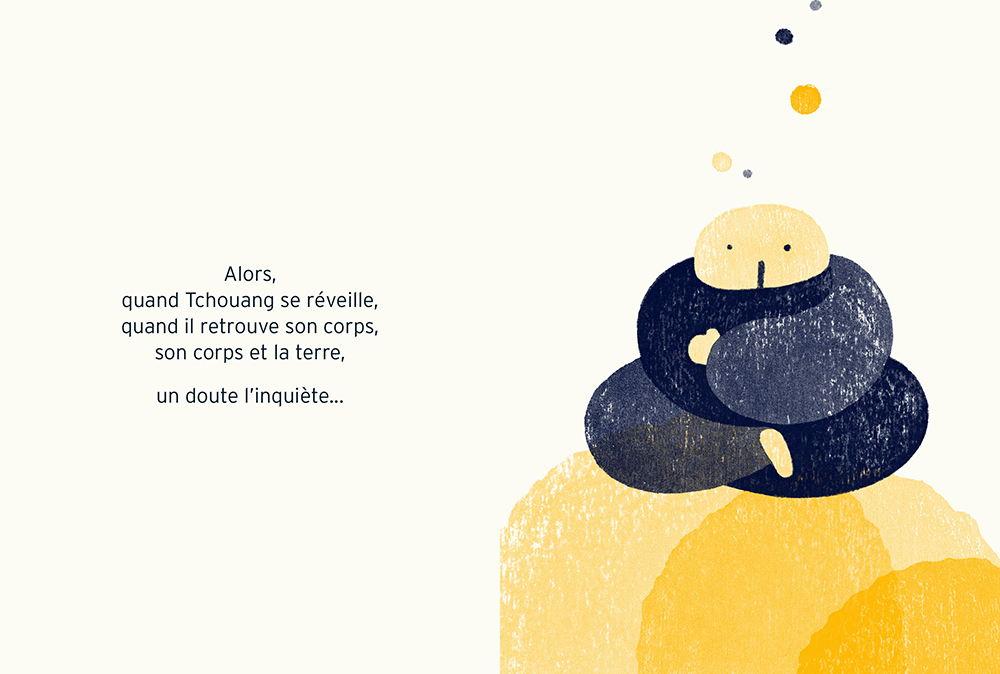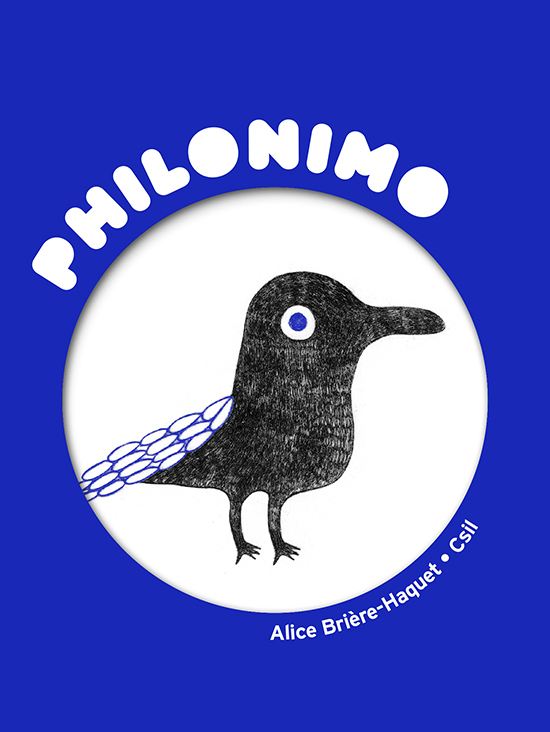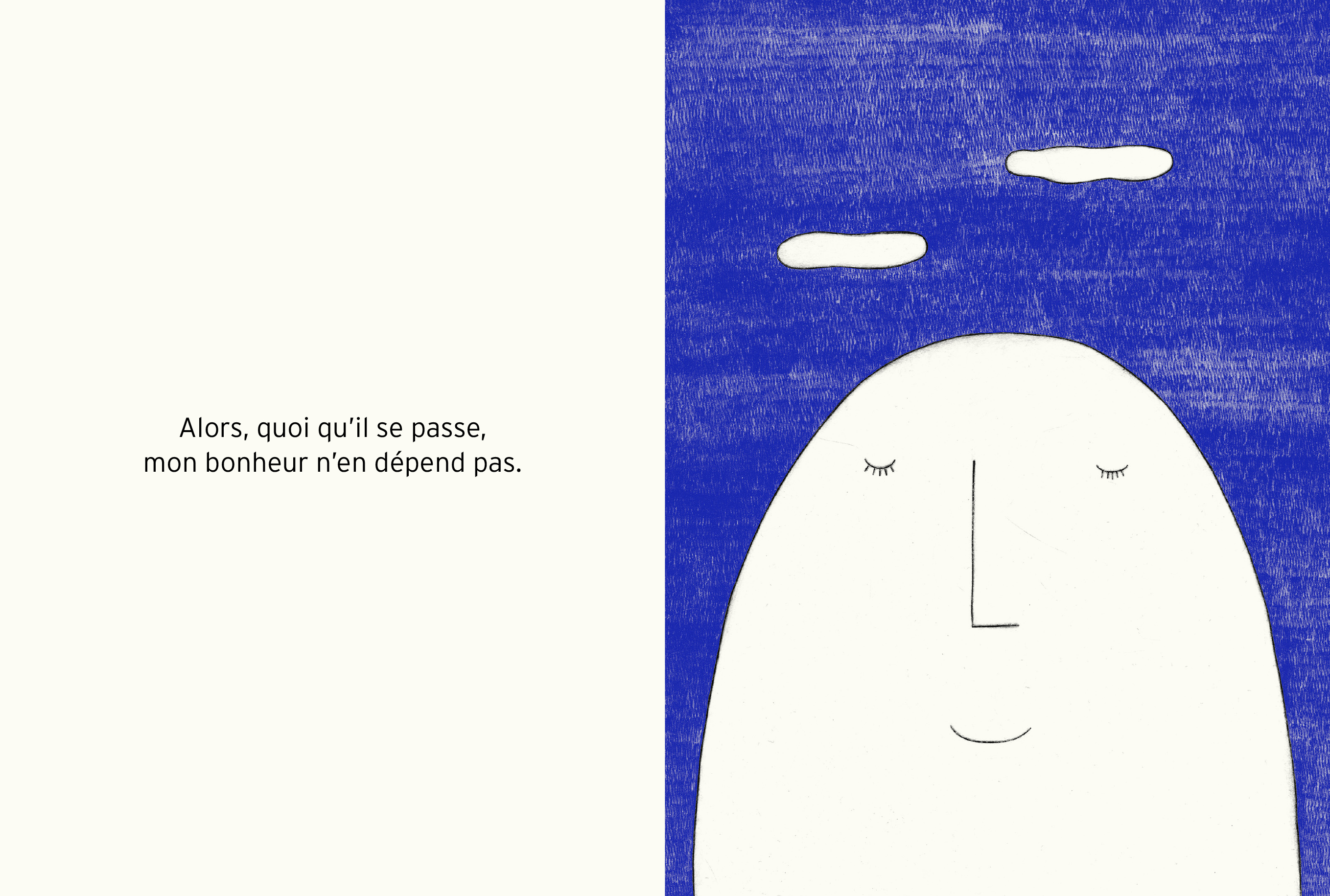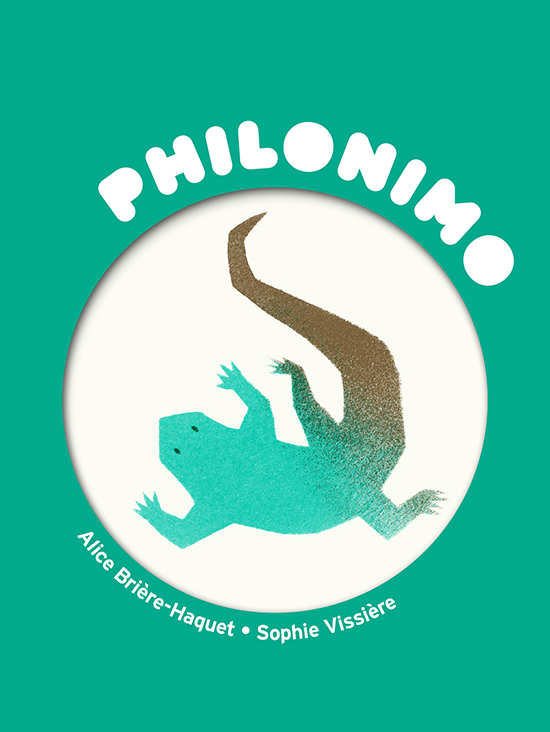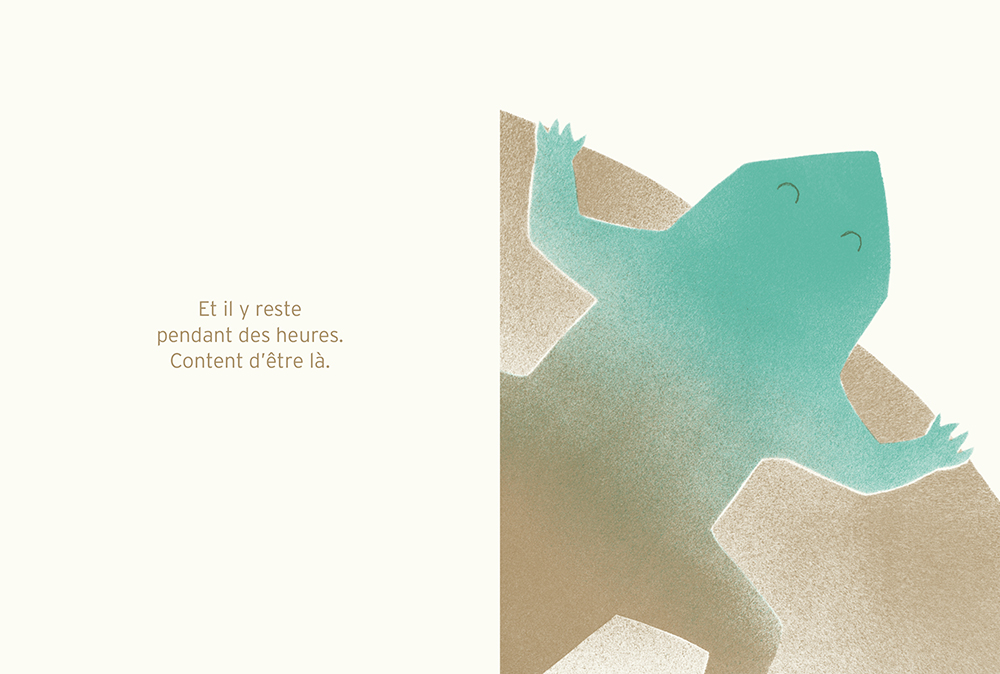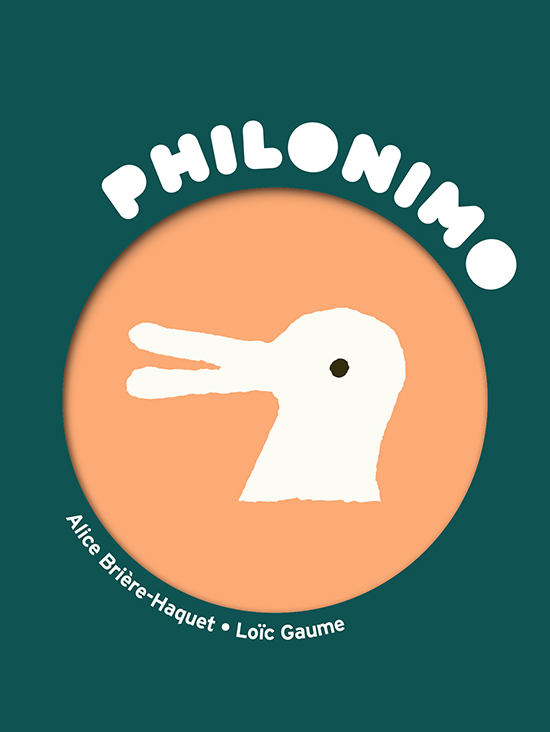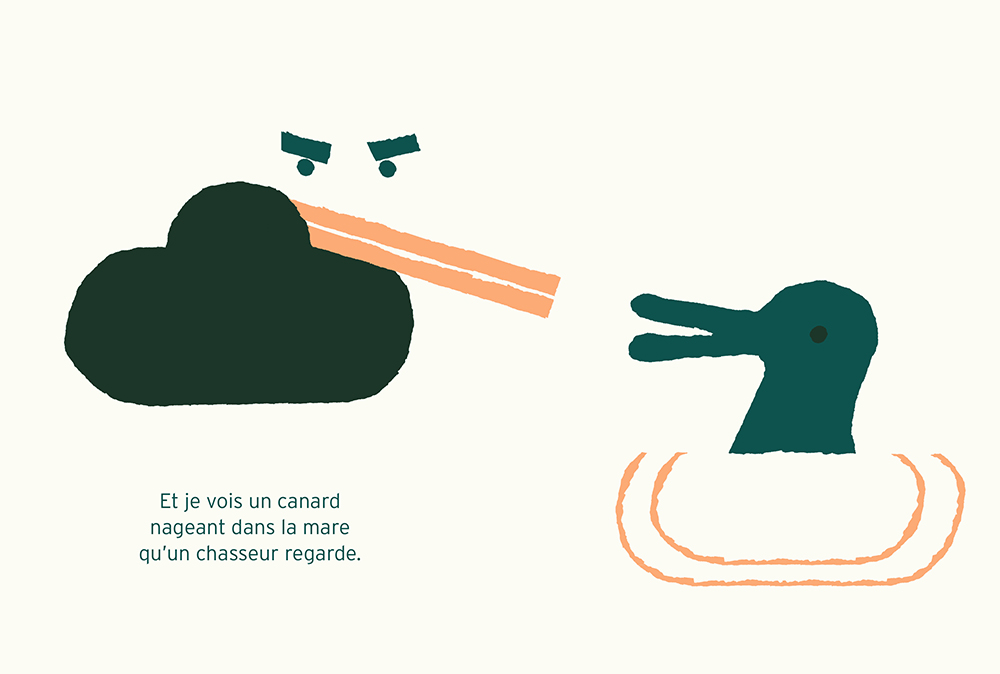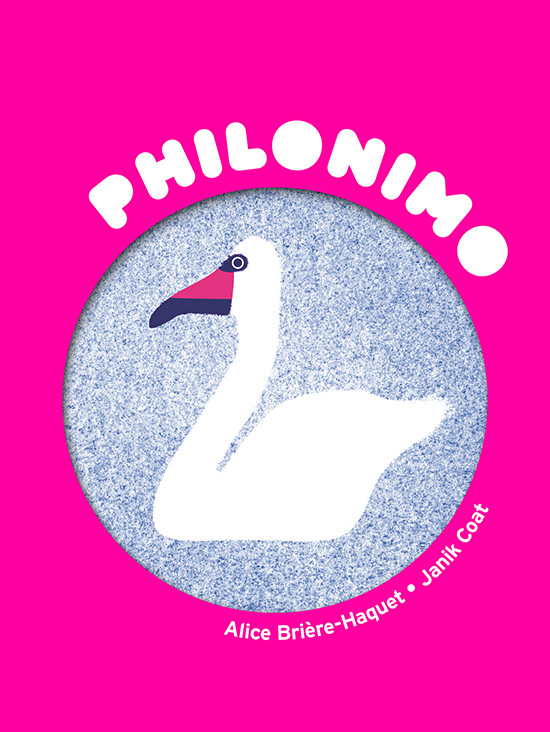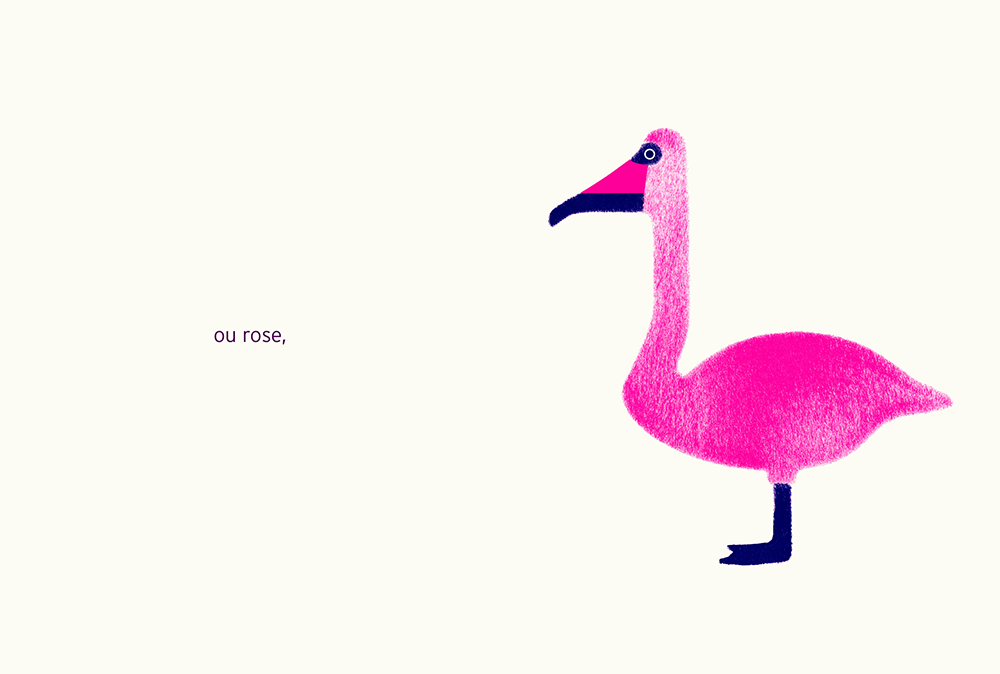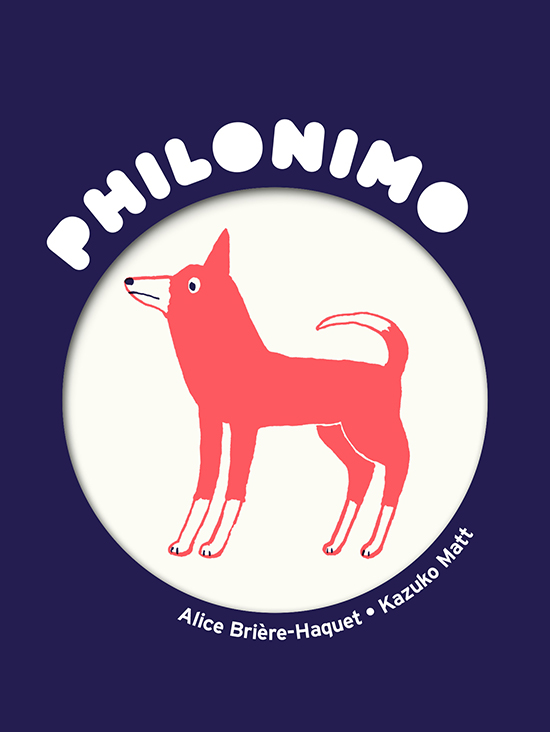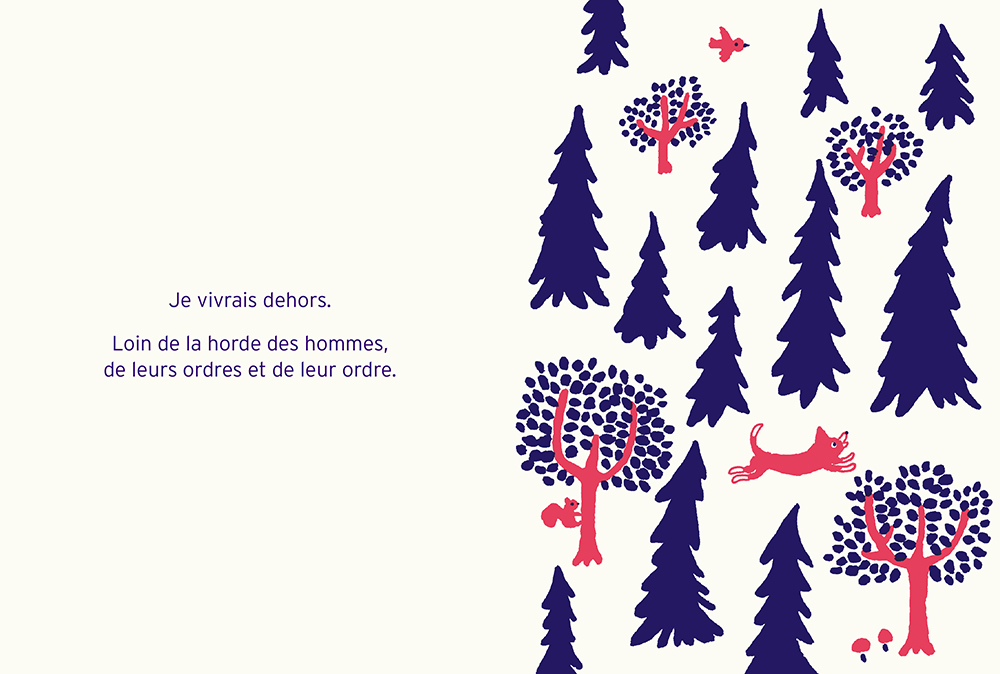HEADLINER
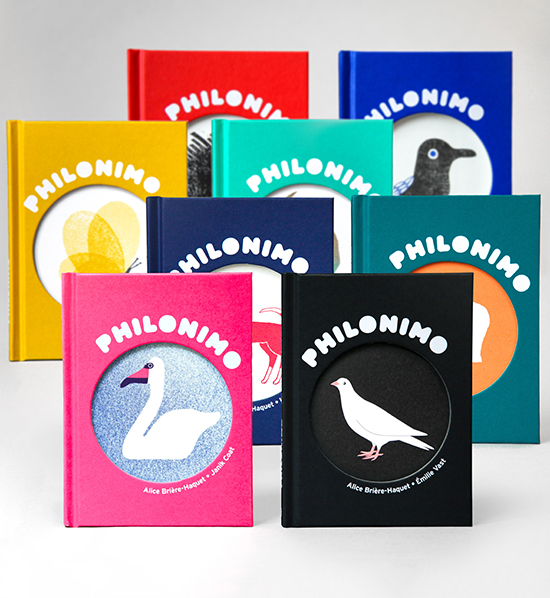
AUTHOR
Alice Brière-Haquet
Publisher
3œil
Children's Books
PHILONIMO
Eight books, eight philosophers, eight illustrators: the Philonimo collection introduces very young readers to great thinkers through original graphic universes and simple texts, to give them the essence of the important philosophical concepts.
What is happiness? What is politeness? And how do we define ourselves between the dream and the reality? These are some of the important philosophical questions that the Philonimo collection explains too children and their parents.
Let’s take politeness, for example, a subject Schopenhauer broached in 1851, and applied to an array of porcupines: "Humans, like porcupines, like to assemble and, at the same time, avoid each other - seek one another out, and prick each other. They are in search of the right distance, the one that allows them to stand together, yet leave some space... What if it were politeness?" This is how collection author Alice Brière-Haquet summarizes the great German philosopher’s theory.
"Right away I saw this comparison as both very astute and very comprehensive... even for toddlers. Politeness is a difficult subject, and we quickly fall into moralistic discourses, right?" continues the New York Times Award-winning author who loves images and words, and who, after teaching literature and art history, began writing fairy tales, novels, and poems for children.
After Schopenhauer's hedgehog’s dilemma, Alice Brière-Haquet references Epictetus’ crow, Chuang-Tseu's butterfly, Wittgenstein's duck-rabbit, Diogenes' dog, Heidegger's lizard, Popper's swan and Kant's dove.
"Since early Antiquity animals have been used as metaphors for humans: from Aesop’s fables to current children's literature, the animal figure makes it possible to illustrate ideas, to appropriate them or to distance them. Schopenhauer really loved animals!,” Alice Brière-Haquet explains. She partnered with likeminded young illustrators, a different one for each book. And you can tell, as like the texts, the drawings are humoristic, intelligence and incredibly elegant. This explains why it is so successful in France and why rights have been sold for five languages including world English.
"Foreign publishers were seduced by the theory behind the collection. The two pantone illustrations, the small format, the hard cover with the cut-out all quickly attracted attention. The short and extremely accurate texts also pleased a lot," explains Christian Voges, foreign rights agent for, amoungst others, Éditions 3œil, a small independent publisher founded in Reims in 2016, which considers “books as a holistic space for experimentation."
The Philonimo collection is a good example.
Katja Petrovic
September 2022
Eight books, eight philosophers, eight illustrators: the Philonimo collection introduces very young readers to great thinkers through original graphic universes and simple texts, to give them the essence of the important philosophical concepts.
What is happiness? What is politeness? And how do we define ourselves between the dream and the reality? These are some of the important philosophical questions that the Philonimo collection explains too children and their parents.
Let’s take politeness, for example, a subject Schopenhauer broached in 1851, and applied to an array of porcupines: "Humans, like porcupines, like to assemble and, at the same time, avoid each other - seek one another out, and prick each other. They are in search of the right distance, the one that allows them to stand together, yet leave some space... What if it were politeness?" This is how collection author Alice Brière-Haquet summarizes the great German philosopher’s theory.
"Right away I saw this comparison as both very astute and very comprehensive... even for toddlers. Politeness is a difficult subject, and we quickly fall into moralistic discourses, right?" continues the New York Times Award-winning author who loves images and words, and who, after teaching literature and art history, began writing fairy tales, novels, and poems for children.
Let’s take politeness, for example, a subject Schopenhauer broached in 1851, and applied to an array of porcupines: "Humans, like porcupines, like to assemble and, at the same time, avoid each other - seek one another out, and prick each other. They are in search of the right distance, the one that allows them to stand together, yet leave some space... What if it were politeness?" This is how collection author Alice Brière-Haquet summarizes the great German philosopher’s theory.
"Right away I saw this comparison as both very astute and very comprehensive... even for toddlers. Politeness is a difficult subject, and we quickly fall into moralistic discourses, right?" continues the New York Times Award-winning author who loves images and words, and who, after teaching literature and art history, began writing fairy tales, novels, and poems for children.
After Schopenhauer's hedgehog’s dilemma, Alice Brière-Haquet references Epictetus’ crow, Chuang-Tseu's butterfly, Wittgenstein's duck-rabbit, Diogenes' dog, Heidegger's lizard, Popper's swan and Kant's dove.
"Since early Antiquity animals have been used as metaphors for humans: from Aesop’s fables to current children's literature, the animal figure makes it possible to illustrate ideas, to appropriate them or to distance them. Schopenhauer really loved animals!,” Alice Brière-Haquet explains. She partnered with likeminded young illustrators, a different one for each book. And you can tell, as like the texts, the drawings are humoristic, intelligence and incredibly elegant. This explains why it is so successful in France and why rights have been sold for five languages including world English.
"Foreign publishers were seduced by the theory behind the collection. The two pantone illustrations, the small format, the hard cover with the cut-out all quickly attracted attention. The short and extremely accurate texts also pleased a lot," explains Christian Voges, foreign rights agent for, amoungst others, Éditions 3œil, a small independent publisher founded in Reims in 2016, which considers “books as a holistic space for experimentation."
The Philonimo collection is a good example.
Katja Petrovic
September 2022
The Philonimo collection is a good example.
Katja Petrovic
September 2022
